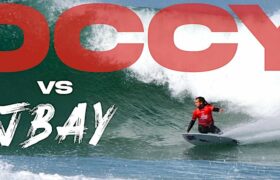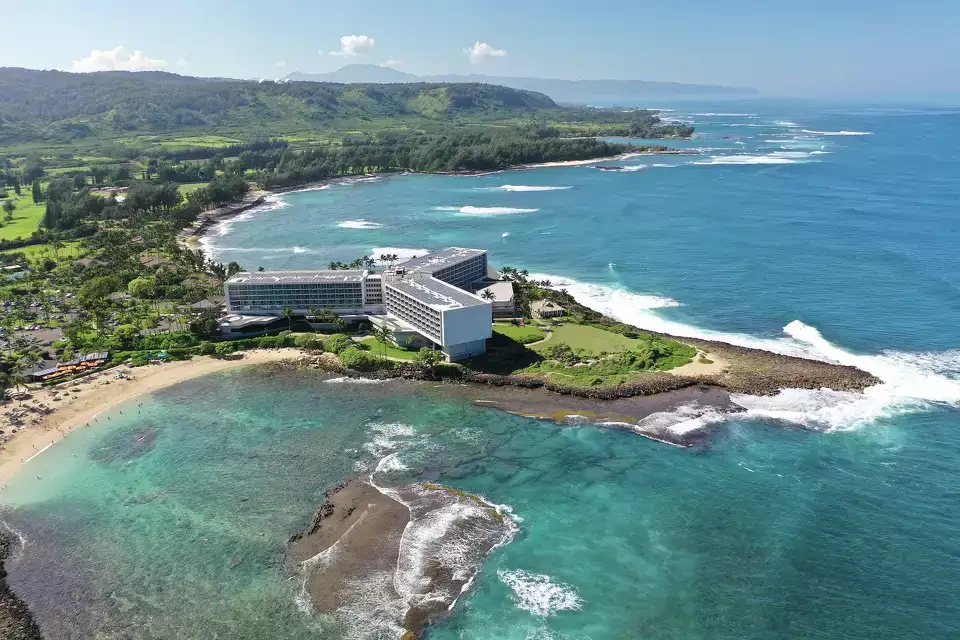Tired ol gal built in 1972 as Del Webb's Kuilima Resort Hotel & Country Club and host to pivotal moments in surf history to get new name!
There is no other hotel on the surf circuit as storied as the Turtle Bay Hotel, a tired ol gal built in 1972 and launched as the grandiosely named Del Webb’s Kuilima Resort Hotel & Country Club a little way out of the seven-mile miracle on the Kam Highway.
So many gorgeous memories. Hazy dreams of the Mai Tai, similar to Namotu Island’s infamous Skulldragger, that renders its owner drunk before the bottom of the tumbler is sighted; a dear pal paying five hundred bucks for a room so he could attempt to seduce a Mormon gal, a fifteen-hour marathon that began at Waimea Bay, through the Turtle Bay hot tub (and Mai Tais) and ended with the reward of a brief moment of digital pressure atop modest cotton underwear; driving back to the Pipe House after Mai Tais, windows down, music roaring, waking up the next day to find car driven into tree outside the joint, windows still down, music cranked to the stars. Dancing all night with athletic T-Girls after ASP banquet etc.
And, if we’re to believe the research of writer Andy Martin, the place where the 11th Earl of Coventry and high-profile British pro surfer, Ted Deerhurst, was found dead in the tub of his condo, murdered at the behest of a shadowy North Shore gangster.
In Surf, Sweat and Tears, the epic life and mysterious death of Edward George William Omar Deerhurst, buy here etc, we find Deerhurst, besotted by a Honolulu stripper to the point where he loses his mind over her, and even when he’s warned away by a nicknamed “Pit Bull”, he keeps coming back.
Deerhurst wants to marry his stripper, and he winds up breathing his last breath, in an empty bath tub.
In SST, Martin talks to a man who found the royal’s body.
“Dan got back to 100 East Kuilima around 7:30 pm. The house was quiet…Ted was in the bath. He was naked. And he was dead. But he hadn’t been having a peaceful bath and sailed away into the great beyond. Something violent had happened to him. There was no water in the bath for one thing… Ted is face down in the bath with his legs sticking out at the side. He is not breathing. His lips have turned blue and rigorous mortis has set in. There is blood in the bath. There is a “contusion” (as it says in the report) at the back of his head. And there are injuries to his face too: cuts on his nose, a black eye. He looks, prima facie, as if he has been beaten up. But, say the price, Ted beat himself up.”
The Turtle Bay is also the sight of Kalani Robb’s scene-stealing cameo in Forgetting Sarah Marshall
Anyway, the joint has been sold for three-quarts of a billion dollars to Host Hotels and it’ll be rebranded as a Ritz-Carlton.
James F. Risoleo, President and Chief Executive Officer, said,
“We are thrilled to enter into an agreement to acquire Turtle Bay Resort, which will further expand and diversify our already strong presence in Hawaii. Oahu is a high demand leisure destination with consistently high occupancy, an internationally diverse demand base, and high barriers to entry, resulting in slightly negative supply growth historically and essentially no anticipated near-term supply. In addition, because of the Resort’s recent transformational renovation, we do not expect meaningful capital expenditures in the near term. We look forward to working with employees and local partners to build upon the Resort’s preeminent position on the North Shore of Oahu.
For a little overview,
The Resort is situated in a unique location on 1,180-acres on the North Shore of Oahu with five miles of beach and coastline views. It features 450 rooms, all with ocean views, including 42 bungalows with direct beach access, a separate check-in, and a private pool. Other amenities include 18,000 square feet of indoor meeting space, a club lounge, six food and beverage outlets, seven retail spaces, a spa, fitness center, two golf courses, seven beaches, four resort pools, tennis and pickle ball courts, an equestrian center, a working farm, and access to 12 miles of oceanfront trails. The 49-acre oceanfront Land Parcel is entitled for development, and similar to the Company’s strategy at other properties, Host intends to enhance its value over the long term.










